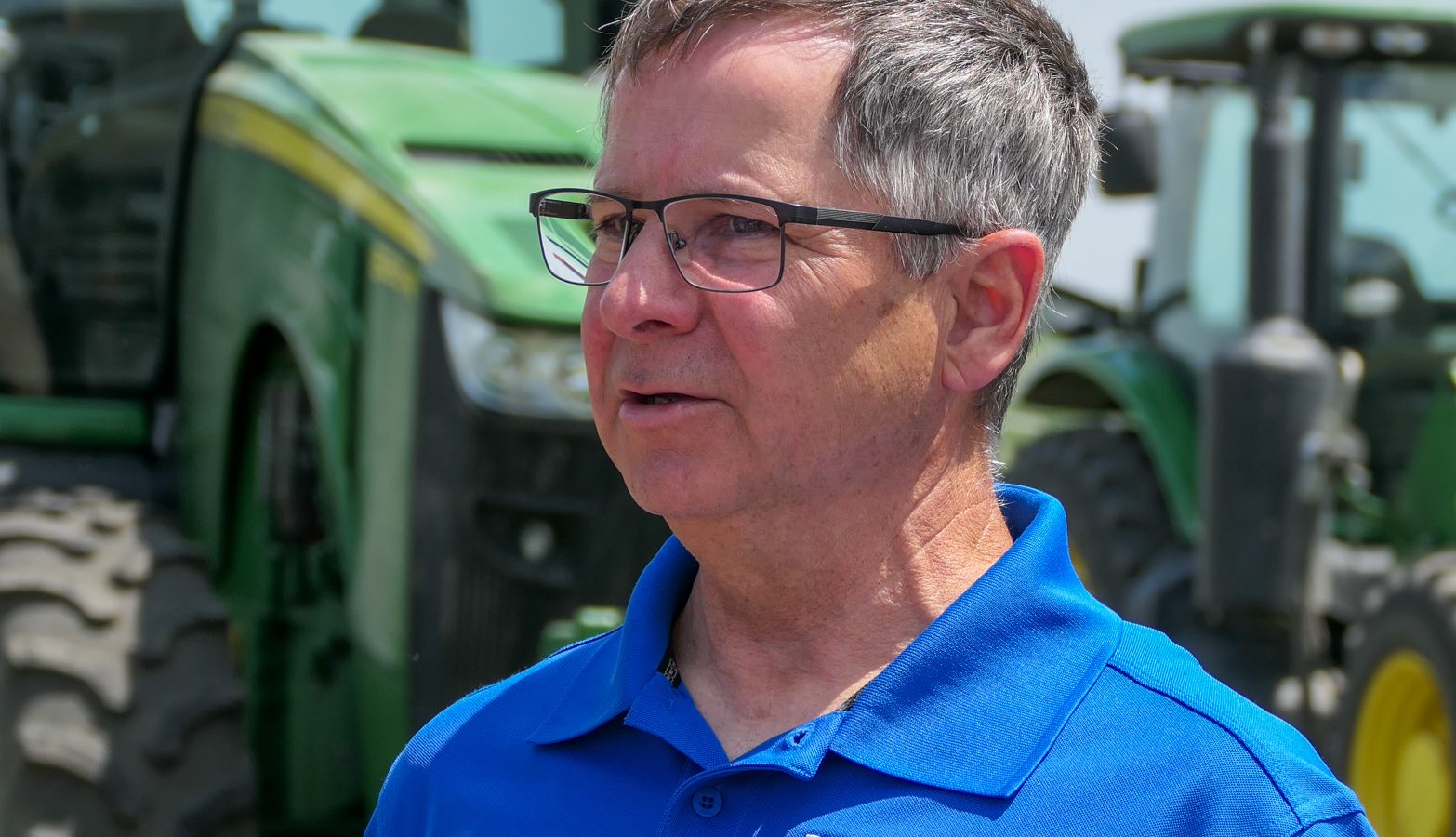
Steve Wellman, a grain and cattle farmer and former Director of Agriculture for Nebraska, is a strong advocate of research, innovation, and conservation. He practices no-till, grows genetically modified corn and soybeans, and has implemented several measures, including contour terraces, to prevent soil erosion on his 700-hectare farm. Read more about Steve’s approach to soil and water management.
Syracuse is a small city with approximately 2,000 inhabitants, about an hour’s drive from Nebraska’s capital, Lincoln. Steve Wellman, the great-grandson of German emigrants like so many in the area, has a relatively average farm for southeast Nebraska: 700 hectares, just over 1,700 acres, which he and one employee manage. He owns part of the land and leases the rest, with the leases being renewed annually.
Of course, like practically everyone here, Steve practices no-till cultivation; the only fertilizer he uses is provided by the soil. He operates a corn-soybean rotation with some alfalfa and winter wheat and grows cover crops during the winter. He uses genetically modified varieties in his main crops of corn and soybeans, primarily to guard against soil-borne pathogens and for herbicide tolerance. Precision farming is a standard technology.
Steve’s 50 cows and calves are mostly Angus, and the offspring are usually sold at eight to nine months to feedlots for finishing. He finishes a few animals with corn on his farm and sells them to local slaughterhouses at about 16 months.
Water management is the be-all and end-all
Erosion is a significant threat in this hilly region. On Steve’s relatively small, gently sloping farm, the differences in height are as much as 100 meters. Rainfall, which averages 750 to 800 mm a year, can be heavy and doesn’t always come at the best time for the vegetation. That’s why Wellman Farms has always taken precautions, Steve explains. Indeed, after his grandfather bought the farm, he built so-called contour terraces on the slopes to keep the water in the ground.
Grass strips replace erosion gullies on Wellman Farms and throughout the region, which can easily be seen from the air. They lead to an artificially created pond at the foot of the slope that collects the water. Steve is currently installing the modern version of these erosion grass strips: Drainage pipes carry the water downslope to the pond. For decades, The Department of Agriculture (USDA) has required measures against erosion, including relocating drainage pipes.
Knowledge and technology
However, despite the reasonably comfortable average rainfall, things can turn out quite differently in this continental climate. The worst drought Wellman remembers was in 2003. Yields were in single digits, as in 2012 when the entire U.S. was hit by drought. As a result, almost all farmers rely on crop insurance, the premiums shared by the farmer and the government. If the costs fall below a certain level, the loss is compensated.
Wellman describes himself as pro-research, which is common among U.S. farmers. A graduate of the University of Lincoln, he has seen corn and soybean yields double since he started farming in 1980. Biotechnology and GMOs are key drivers of progress, as are university and industry research. Wellman does not distinguish between advances in biotechnology and sustainability, such as drainage. “Innovations help us improve. Whether or not you call it sustainability, it doesn’t matter,” he says.
This piece is a translation of an article by Catrin Hahn, a freelance journalist specializing in agriculture and renewable energy. The article first appeared in the German publication Getreidemagazin.


